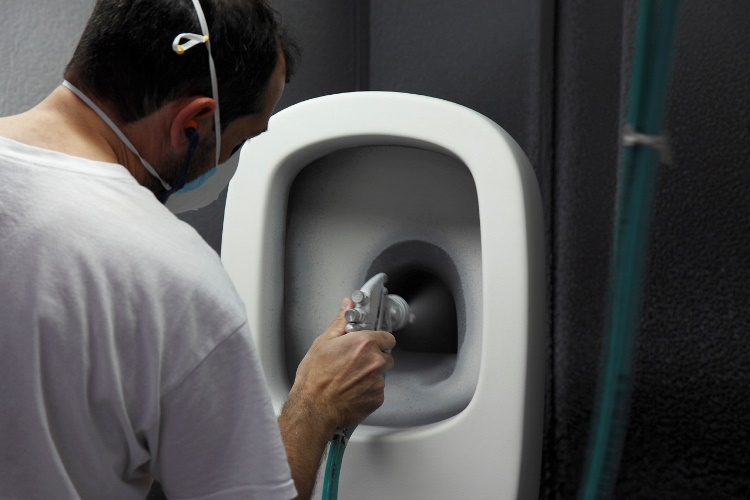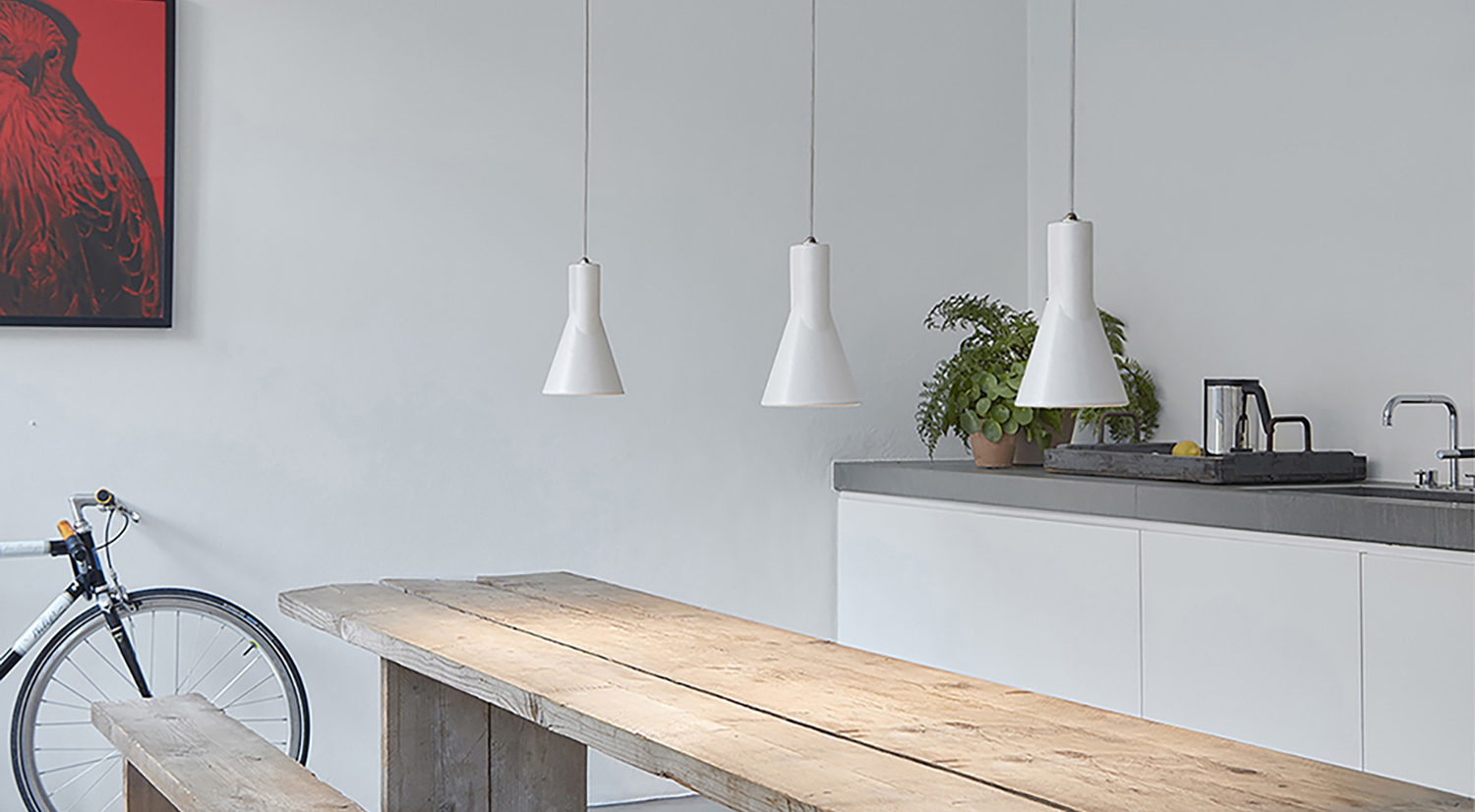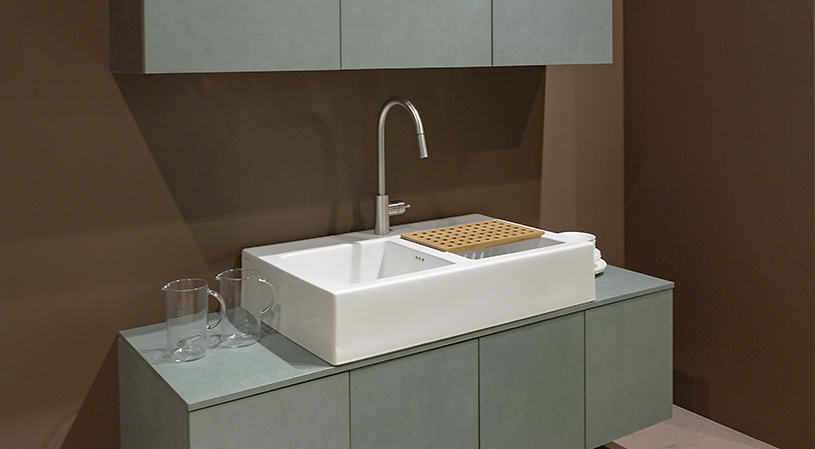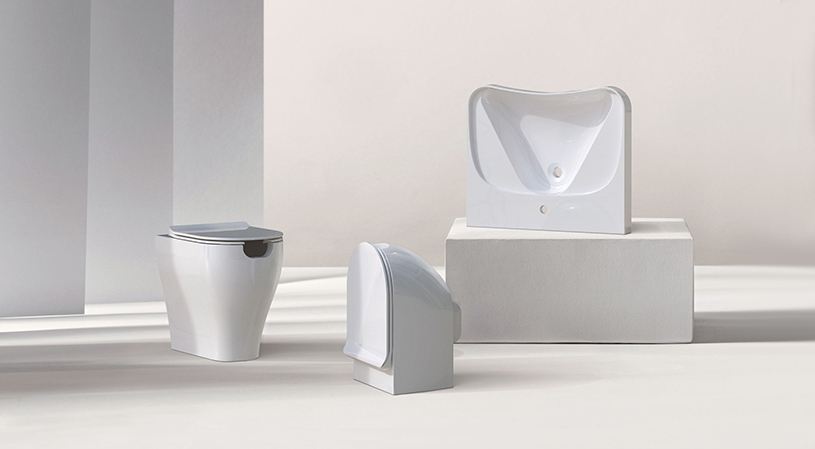From the first toilet in history til today, the production of sanitary ware has evolved, refining over time an art that is a synthesis of craftsmanship, physics, plumbing and interior architecture. Today, sanitary items have been transformed into real design elements and define bathroom furnishings in an increasingly relevant way. But how are they made and what affects the quality of a sanitary ware? Let’s find out.
How a toilet works
All the toilets in our homes are composed of a ceramic basin and a toilet seat with a seat and a closing tablet. The bowl of the vessel incorporates a ceramic siphon system which is the heart of any sanitary fixture, whether suspended or not. The siphon is connected to the drain system through external plastic fittings and bends. The vessel is thus inserted into the system for the loading of clean water and the discharge of the dirty one.
How is the toilet made
The first phase is the design, where the aesthetic and functional aspects must find the right compromise. Once the idea has been fine-tuned, designed in detail on the computer and developed with a few scale models, it goes through the company and the modeling department, the real nerve center of production. The modeling have to give an impeccable shape to the original mold that will be reproduced over and over again. The mold is essential as the slurry (the actual ceramic) is poured inside. This mixture, kept at a constant temperature and previously filtered, enters the mold where the plaster absorbs its water, allowing the first solidification of the clay, which is still very fragile.
Once the mold is opened, the pieces are moved to the drying chambers where they remain for 24 hours at 90° C, completely and gradually losing the residual water. After the drying phase, the bathroom fixtures are finished and meticulously checked. Removed all impurities, they are enamelled. During enamelling, white or colored enamel is sprayed both inside and outside the piece. The enamel is also distributed in the non-visible parts of the toilet, such as the siphon: this step is crucial to avoid bad smells. The ceramic now completely absorbs the color molecules and is ready to the heat treatment. The final phase is that of cooking where the sanitary ware, still raw, remain for 24 hours at about 1280 ° C. At this point the final product is ready to be subjected to quality tests. If these are passed brilliantly, the products are packaged to be shipped all over the world.
The art of ceramics
From a technical point of view, sanitary ware ceramic is composed of clay, feldspar, quartz sand, iron oxides and alumina. A composition that gives the raw material a certain plasticity and ease of processing: these materials, in fact, allow the sintering of the ceramic body and the opaque vitrification of the coating during the cooking phase.
Ceramica Flaminia uses two types of materials: Vitreous China and Fine Fireclay. The production processes (casting, drying, glazing and firing) and the glaze used are the same for both materials. What changes are the final characteristics of the ceramic support, which determine the different use of the two materials. Vitreous China is used for objects with specific functional features (WC, bidet and washbasins), while Fine Fireclay is used for large objects (washbasins, consoles and shower trays).
The quality of the products
Flaminia’s sanitary ware and products comply with UNI 4543 standards as regards the resistance of the ceramic mass, of the glaze to chemical attacks and mechanical stress. As regards the functional tests, for toilets, washbasins, bidets, shower trays, urinals and channel washbasins, the relative standards are: UNI EN 997, 14688, 14528, 14527. 13407 and 14296. The quality of the products is not only guaranteed from the validity of the raw material, but also and above all from the expertise in the production process, during which expert personnel carry out each step with the utmost attention and competence.
To find out more about all our bathroom furniture products, you can visit the products page on the official Flaminia website.







